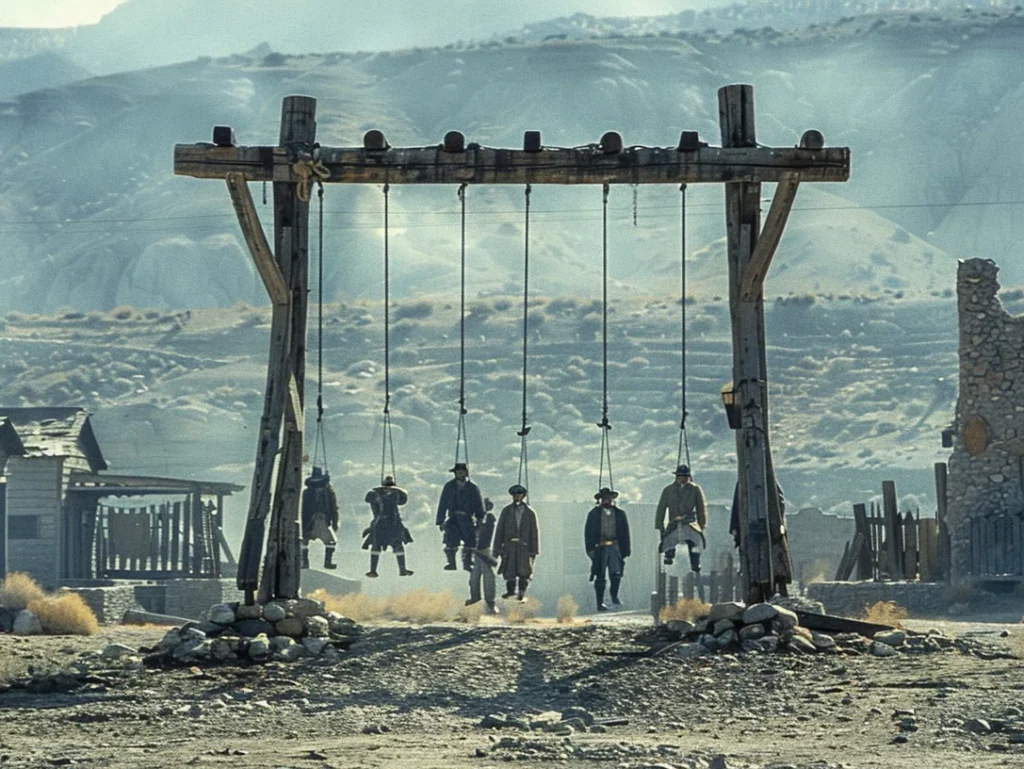The first route originated at Fort Smith, Arkansas (230 miles north of Greenville, Texas), traveling west on the Fort Smith – Santa Fe Trail, meeting the Southern Trail at Santa Fe, north-central New Mexico and traveling south to Cooke’s Spring, southern New Mexico. Fort Smith was known as a gathering spot for west bound pioneers since the California Gold Rush, beginning in 1849. Fort Smith was also known for its location next to Indian Territory (now Oklahoma) and the man determined to tame it. The Territory was home to desperadoes and renegades of every stripe and color, feeling at ease in a land of lawlessness, with one exception. The U.S. Court for the Western District of Arkansas, located at Fort Smith, was responsible for the Indian Territory and presided over by Judge Isaac Charles Parker, nominated by President Ulysses S. Grant on March 18, 1875. The good judge wished to make a point and create a scare. On September 3, 1875 he did both. Before 5,000 onlookers, most likely with picnic baskets and giggling youngsters in tow, three white men, two Indians and one black man, met their eternal fate at the end of a hangman’s noose. From that day on Judge Parker was known as the “Hanging Judge.” The second, and most probable route, began at Preston, Texas (80 miles northwest of Greenville) located where the Fort Smith – El Paso Trail crossed the Red River, separating Indian Territory and Texas. Preston developed around the Coffee Trading Post, not named after the popular beverage, but rather Holland Coffee, established in 1837 on a bend in the river. He was so successful trading guns and whiskey with the Indians for stolen horses and cattle, that Texas President Sam Houston officially named him Indian Agent. Even more impressive was Coffee’s wooing and marrying Sophia of Suttonfield Aughinbaugh, if for no other reason than simplifying her name. Sophia was beautiful and blessed with a creative imagination. She claimed to have nursed Sam Houston back to health after the Battle of San Jacinto, April 21, 1836, during the Texas Revolution with Mexico. Some coarsely suggest she offered services beyond bandages and a warm blanket. During the American Civil War Sophia claimed to have locked visiting Union soldiers in her wine cellar after a hearty meal and sufficient beverages, while she rode muleback into Indian Territory to warn Confederate Colonel James G. Bourland. This courageous act earned her the reputation as the “Confederate Lady Paul Revere.” On October 1, 1846, Holland Coffee was stabbed to death while defending Sophia’s honor. Not only was Coffee done for, but so was the Trading Post. After a time of mourning, Sophia married Major George N. Butts in December, 1847. Butts was ambushed and killed by one of Quantrill’s Raiders, after a quarrel, in 1863. Never one to be held back by murdered husbands, Sophia married, for the final time, Judge James Porter, on August 2, 1865. In 1869, after prodding from Judge Porter, she joined the Methodist church, hopefully repenting of her sins and tall tales.
THE YUMA CROSSING AND THE COLORADO DESERT
The Dougherty wagon train would have continued southwest on the Fort Smith – El Paso Trail through West Texas, crossing the Pecos River, through El Paso, meeting the Southern Trail at Cooke’s Spring, southern New Mexico. Once at Cooke’s Spring, the wagon train, by either original route, would have continued south, reaching and following the Mexican border west, following the Santa Cruz River north to Tucson and the Pima Villages and then following the Gila River west until they reached the Colorado River and Yuma, Arizona. At the Yuma Crossing the wagon train ferried their wagons across the Colorado River into the Golden State.
Once the Dougherty’s crossed the Colorado River, they were met by the Colorado Desert, where the lack of water and heat could undo good men and strong horses, much less women and children. The Desert occupies seven million acres of southeastern California real estate, including all or parts of present-day Imperial County, San Diego County, Riverside County and San Bernardino County. It also includes the Coachella and Imperial Valleys. The Dougherty’s must have wondered if Southern California was nothing more than continuous waste-land to the Pacific Ocean. “What have we done?” “How can we farm?” had to be logical questions. But there was no turning back. The wagon train continued on a western path, crossing the Alamo and New Rivers, then heading northwest over the Vallecito Mountains, crossing Warner’s Pass. They stopped at Warner’s Ranch to rest their tired bodies, restock supplies, enjoy new faces with different stories and mentally prepare for the final leg of their journey. The proprietor of Warner’s Ranch and namesake of Warner’s Pass was one of the most important and colorful personalities of 19th Century Southern California.
Continued in Episode 4: GATEWAY TO THE WEST.

